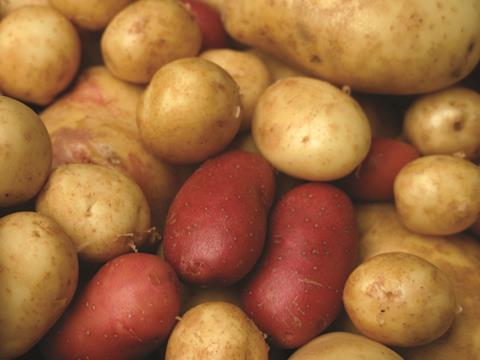
The Department of Health’s plans to bring about a massive increase in the nation’s fibre intake would require people to eat eight portions of fresh fruit and veg a day, according to new research.
The study by scientists at the British Nutrition Foundation also found that to hit the target, all meals would need to be based on starchy foods, including mainly wholegrain options and potatoes with their skins on.
The report notes that the average man would have to increase their dietary intake by 50% and women by 75% to hit the targets suggested in the draft report by the Scientific Advisory Committee on Nutrition (SACN), which it said was “not reflective of average diets in the UK.”
With just weeks to go before SACN publishes its final report, the research looks set to pose huge question marks over how the government and the industry will be able to achieve its suggested target of 30g of fibre a day for adults.
“Simple dietary modelling was carried out to investigate the feasibility of the recommendation by SACN in the context of other nutrient recommendations and food-based guidelines,” said the report by Ayela Spiro, Beth Hooper and Sara Stanner, scientists at the BNF.
“This demonstrated that it is possible to consume 30g of AOAC fibre a day in the context of a healthy diet that meets other dietary recommendations if all meals are based on starchy foods (including mainly wholegrain options and potatoes with their skins), high fibre snacks are selected and the diet is rich in fruit and vegetables (around 8 portions daily).
“Barriers to meeting the recommendation are considered, including the negative consumer perceptions of starchy foods and a lack of awareness regarding the health benefits of fibre, particularly those beyond bowel health.
“Labelling regulations may pose further challenges, as there is not an agreed definition for ‘wholegrain’ and the European Food Safety Authority (EFSA) has concluded that there is, as yet, insufficient evidence to warrant an official health claim for dietary fibre (as a general food ingredient).”
The report described the prospect of overcoming such barriers as a “considerable challenge.”
“Co-operation and collaboration is likely to be required from a number of stakeholders including the food industry, health professionals and regulatory bodies to raise awareness of the benefits of dietary fibre and encourage greater consumption of higher fibre foods,” it said.
“Innovative high fibre ingredients may also be needed to make it easier for consumers to boost their fibre intakes.”
Many in the health lobby are vehemently opposed to an increased role for starchy products, yet the research is the latest to point to Brits having to bulk up their diets if they are to hit SACN’s call.
In February The Grocer revealed consumers would be encouraged to eat more pasta, potatoes and bread and to ditch products high in fat, under plans mooted by a panel put together by Public Health England (PHE), which is discussing a new model for the Eatwell Plate on the back of SACNs plans.
It suggested consumers should be eating more starchy foods, also including rice, noodles and cous cous, plus lots more fruit and veg.
As well as looking at proposed changes to the Eatwell Plate, PHE has also been pushing ahead with recommendations to allow composite foods, including ready meals and pizza, to carry the he DH’s official five-a-day logo, which its experts have said would be needed even to help consumers meet even the existing five a day recommendation.



















No comments yet